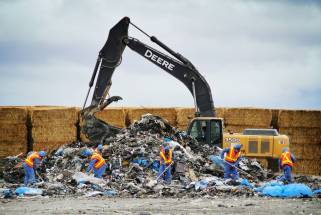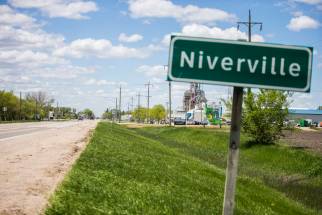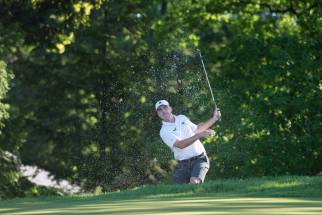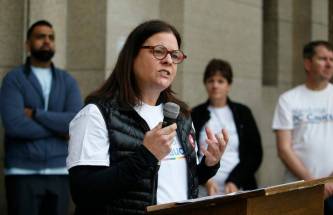Long odds, short grass Behind the scenes with Aaron Cockerill as he tees up with the world's best golfers
Read this article for free:
or
Already have an account? Log in here »
To continue reading, please subscribe:
Monthly Digital Subscription
$0 for the first 4 weeks*
- Enjoy unlimited reading on winnipegfreepress.com
- Read the E-Edition, our digital replica newspaper
- Access News Break, our award-winning app
- Play interactive puzzles
*No charge for 4 weeks then price increases to the regular rate of $19.00 plus GST every four weeks. Offer available to new and qualified returning subscribers only. Cancel any time.
Monthly Digital Subscription
$4.75/week*
- Enjoy unlimited reading on winnipegfreepress.com
- Read the E-Edition, our digital replica newspaper
- Access News Break, our award-winning app
- Play interactive puzzles
*Billed as $19 plus GST every four weeks. Cancel any time.
To continue reading, please subscribe:
Add Free Press access to your Brandon Sun subscription for only an additional
$1 for the first 4 weeks*
*Your next subscription payment will increase by $1.00 and you will be charged $16.99 plus GST for four weeks. After four weeks, your payment will increase to $23.99 plus GST every four weeks.
Read unlimited articles for free today:
or
Already have an account? Log in here »
Hey there, time traveller!
This article was published 10/06/2022 (1278 days ago), so information in it may no longer be current.
HANOVER, Germany — Two continents. Two tournaments. Two tours. More than 13,000 kilometres in the air. And more than 150,000 steps on foot.
Free Press sports columnist Mike McIntyre has spent the past two weeks following the province’s top professional golfer, Aaron Cockerill, as he criss-crosses the globe teeing it up with some of the biggest names in the game.
First up was the Porsche European Open in Hamburg, which was the latest stop on the DP World Tour, where Cockerill plays regularly and is enjoying a breakthrough season. Then it was back across the pond to Toronto, where Cockerill made his PGA Tour debut Thursday at the Canadian Open.
His is a compelling story, one filled with triumphs and tragedy and overcoming long odds. McIntyre had extensive behind-the-scenes access to get to know the 30-year-old product of Stony Mountain.
It can be a long and lonely life on the road, especially so far away from home. There’s no guaranteed contracts here, not even the promise of making a single penny on any given week. But it’s the lure of what might just be around the corner, the elusive pursuit of perfection that keeps Cockerill going.
It’s a day Kathy Cockerill will never forget.
Just moments after the small Cessna took off on the morning of Aug, 8, 1992, it went down in Norris Lake, just a few kilometres northwest of Teulon.
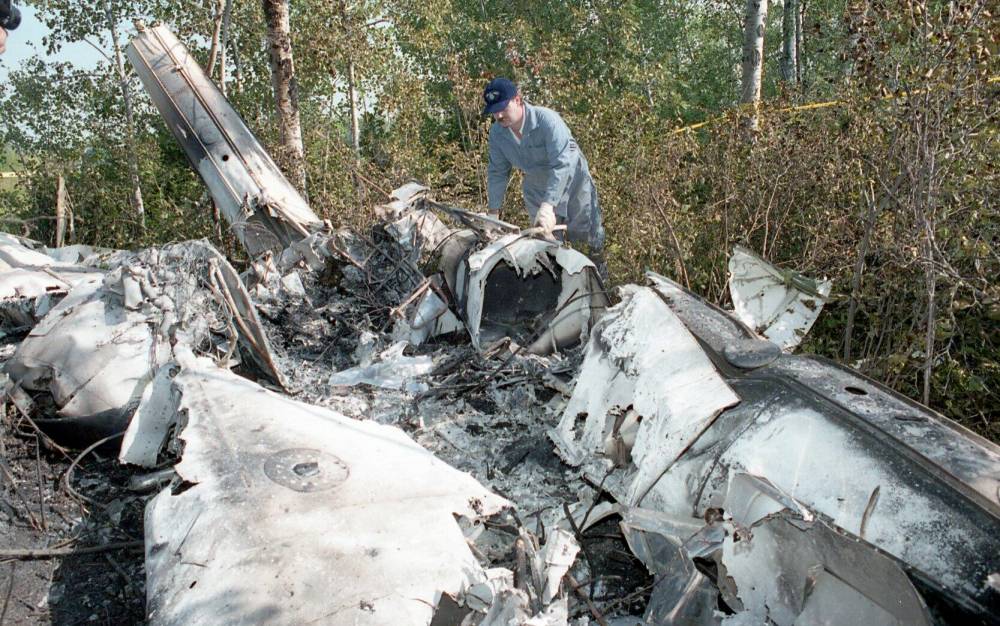
The 65-year-old pilot, Alexander Charison, his 30-year-old son-in-law, Glen Cockerill, and 43-year-old Richard Waluk were killed instantly. The trio had been heading off for a weekend of fishing.
“My life changed in a heartbeat,” Kathy says of losing her father, her husband and a family friend in the blink of an eye. “At the time, you have to do what you have to do. You have to become strong really fast.”
Compounding the loss was the fact she’d just given birth to the couple’s only child less than four months earlier, on April 17. The little boy, named Aaron, would never get to know his dad or grandpa.
Charison had started the local turkey hatchery in nearby Gunton, and also played a big role in getting the Teulon golf course up and running. Waluk worked for him. Cockerill ran a hog and grain farm. Their roots ran deep. As did the grief.
“At the time, you have to do what you have to do. You have to become strong really fast.”– Kathy Cockerill
Now 58, Kathy has no doubt they’d all be so proud of what her baby boy has grown up to become. As she got ready to head to Toronto earlier this week to watch Aaron take his biggest professional step yet, she was emotional and reflective about what it took to get here.
“I’m just truly proud of him. Whether he is on top or comes in last, I’m so proud of him,” she says. “He’s done this on his own. He hasn’t had a lot of backup financially until this past couple of years. He’s never had a coach. I couldn’t afford what those guys charge. This is on his own. He’s struggled on his own.”
The world of pro golf is filled with top-ranked golfers born with a silver spoon in their mouths, surrounded by money and prestige and every opportunity you can think of. Cockerill, who didn’t start taking golf seriously until his mid-teens, had no such privilege.
“I was, like, 15 and played in my junior tournament, a country one. It was the first time I’d played in anything proper, and I won. I was just hooked from that tournament on,” says Cockerill, who is the highest-ranked Manitoba pro golfer (currently No. 312 in the world) to come along in more than a couple of decades. Glen Hnatiuk, a PGA Tour regular in the late 1990s and early 2000s, was the last to have this kind of success.
He’s still never taken a formal lesson, a true self-taught player who occasionally works with national men’s team coach and fellow Manitoban Derek Ingram.
“We literally have, like, three good months (to play golf in Manitoba), so you’re fighting an uphill battle. So I think there’s a little bit more pride there,” says Cockerill.
Kathy chokes up as she recalls how a teenaged Aaron got his first hole-in-one playing at Teulon, the course her father helped found. Then got a second 10 days later.
“My dad, who used to play 36 holes a day, had got a hole-in-one, then 10 days later another. I swear to God, I said my dad clearly had something to do with that,” she says.
She’s still working at a local credit union, having helped put Aaron through the University of Idaho, where he played on the golf team while getting his finance degree from 2010 to 2014. The two-time Manitoba golfer of the year then turned pro the following year, playing parts of four seasons on the MacKenzie Tour-PGA Tour Canada. All told, he made about $47,000 total, with just three top-10 finishes.
“That doesn’t even cover your expenses. He didn’t do that good,” says Kathy, who admits she can be hard on her boy.
“Like, you’re not getting away with s—t with me. I was quite strict with him and, on his wedding day (last fall), I said in my speech that Aaron, you have turned out to be such a well-rounded, respectful, young man and not a day goes by that I don’t say I’m so proud of you.”
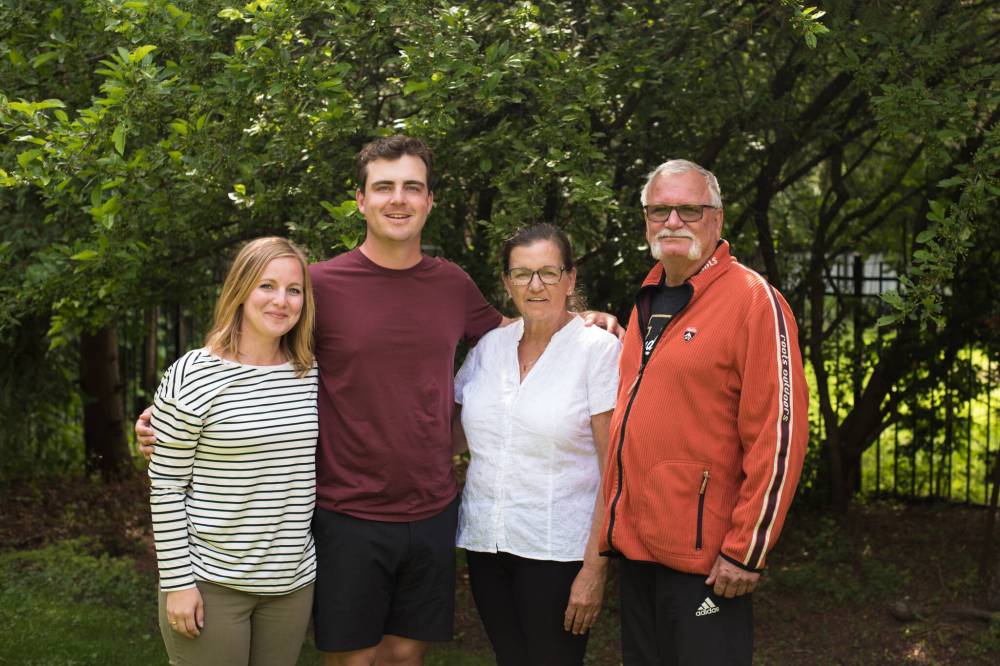
She remarried in 1999 to Doug Bottrell. Her son, then seven, took a while to adjust.
“Aaron always called him Doug. Then Daddy Doug, Dougy Dad. Then, finally, Dad,” she says.
They were cheering him on this week as he took his first PGA Tour swings in the Canadian Open against the likes of Scottie Scheffler, Rory Mcllroy and Justin Thomas at historic St. George’s Golf and Country Club on a sponsor’s exemption.
“I’m trying to think that it’s just another tournament, not trying to play it up because I don’t want it to get in his head. But yes, damn right I’m excited,” says Kathy.
It takes a village to raise a child. And the same could be said when it comes to developing a successful professional golfer. The best equipment, the proper clothing, quality coaches and caddies and the non-stop travel quickly adds up.
There was no money tree in the Cockerills’ backyard. So it came down to the generosity of strangers, who opened their hearts and their wallets to get him on his feet, and then keep him there.
“He’s like a son to me,” says George Sigurdson, who runs his own financial group boasting more than 3,000 clients and $200 million of investment assets.
With Cockerill fresh out of college and just getting his pro career started in Canada, Sigurdson was introduced to him through Ryan Hart, the tournament director of the Players Cup, the Winnipeg stop on the PGA Canada Tour.
“Just from the first time I met him, you fell in love with him. The smile; just the nicest, kindest guy. And so when he came down to the office we met and talked about his future. At that time, you know, he was literally living on wieners and beans,” says Sigurdson.
“It’s not like he’s sitting at a place in Palm Springs. This is a guy who is driving balls in a garage in the middle of a Winnipeg winter.”
Sigurdson put out a community call and formed “Team Aaron” — about three dozen supporters initially donated between a few hundred and a few thousand dollars through meet-and-greets and fundraising dinners. In return, Cockerill would play golf with them, provide some tips and give them a local kid to root for.
“It’s not like he’s sitting at a place in Palm Springs. This is a guy who is driving balls in a garage in the middle of a Winnipeg winter.”– George Sigurdson
“We just want to help these guys get going. They all have a soft spot for these guys,” says Sigurdson, who has his own personal deal with Cockerill that involves giving him $50 a birdie at every tournament he plays.
“Every weekend he collects about a thousand bucks off me!”
There’s some terrific stories out there, such as 83-year-old Mary Alice David, who texts Sigurdson nearly every week with messages such as, “Our boy’s doing well.” Cockerill makes a point of checking in with her by phone whenever he can, to offer his thanks.
“I always ask them, what do they want in return? Ninety per cent say, ‘just want you to play well and have a good run,’” says Cockerill, who is humbled by the groundswell of grassroots support that helped offset what he estimates is at least US$75,000 in annual playing expenses.
Subhas Chandar, Ken Houssin, Tom Bryk, Dale McMillan, Don Walters, Don Lundgren, Richard Carson, Dieter Bonas, Ed Waggoner and Bob Tallman are among the many others who stepped up in a significant way.
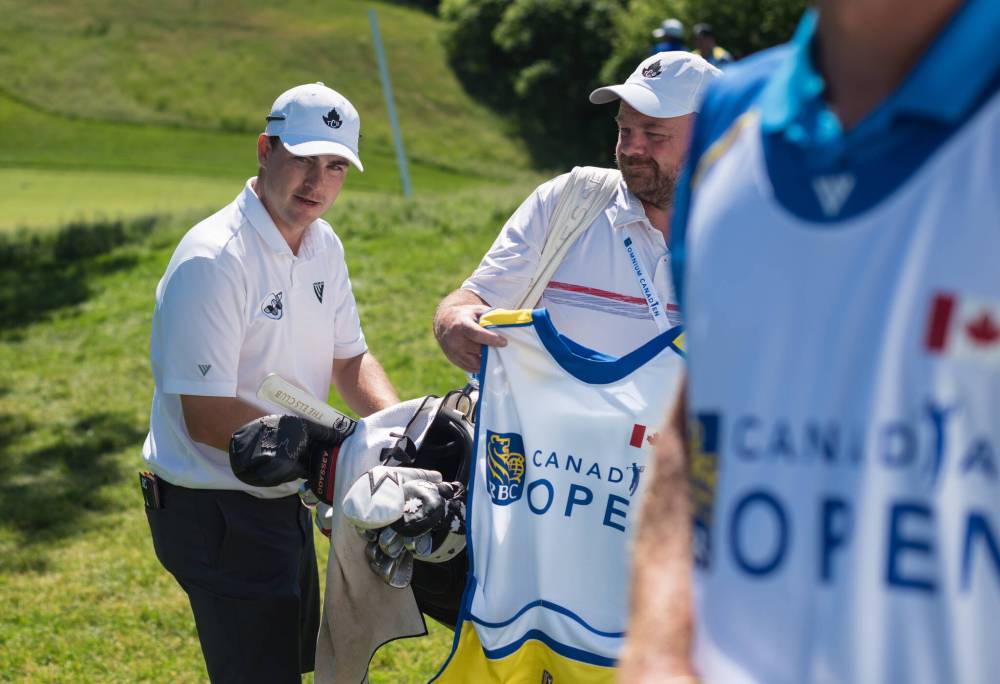
“He’s such a nice guy. The passion that he had for trying to find a way to become successful was really quite endearing,” says Tallman, the now-retired chairman of Princess Auto, who also met Cockerill through Hart. His son, Matt, has also got in on the act, with Cockerill now sponsored by his company, Trans Canada Brewing.
“The connection is wonderful. We all follow and go up and down like he does,” says Tallman, who has travelled as far as Ireland to watch Cockerill play.
Sigurdson says he’s tried to offer some fatherly type advice to Cockerill about the need to stay true to himself.
“When I’m working with these young athletes I tell these guys to make the most of it. One day, you’re going to go from the ‘who’s who’ to the ‘who’s he?’ And you’re going to go from sipping the wine to stomping the grapes overnight,” he says.
“Aaron has a quiet leadership and is definitely focused. I truly believe he has all it takes to be one of the greatest. His confidence is growing more and more every day.”
The morning scene outside the Grand Elysée Hotel in downtown Hamburg is eclectic.
On one bench, a French golfer and his caddy — who also happens to be his wife — are staring into space as they take drags on their cigarettes. A Spanish golfer paces nearby on his phone. Two German players are carrying on a nearby conversation.
They’re all fit young men, lanky and lean and sporting clothing bearing the logos of the usual suspects: Titleist, Ping, Callaway.
And they shuffle, one-by-one, onto the 11 a.m. shuttle bus that has arrived to take them to the Green Eagle Golf Courses, about a 45-minute drive away. They’re here for the Porsche European Open, the 17th tournament of a 44-event DP World Tour slate that began last January and will end in November in Dubai.
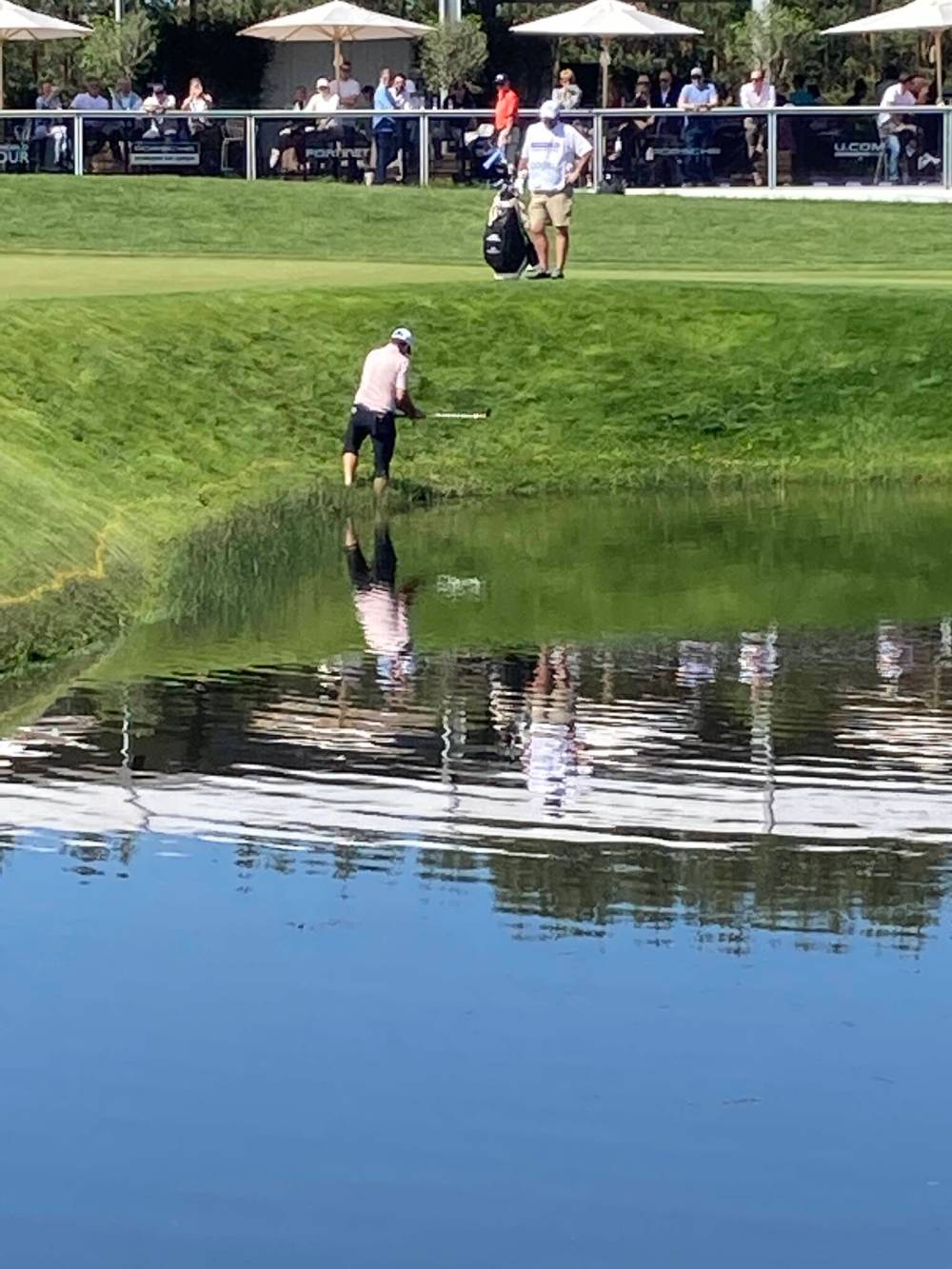
Formerly known as the European Tour, there’s a rich history to what is universally seen as the second-best loop in the world, trailing only the PGA Tour.
Cockerill, the only current player from Canada, can’t get a seat on this one, but the consolation prize is pretty sweet — a seat inside a slick sports car, one of a couple of dozen commissioned for the week to transport players and staff back and forth.
A few minutes later we’ve hit the Autobahn, and our driver is repeatedly being passed, despite surpassing 200 km/h on the speedometer.
“The guy yesterday hit about 240,” Cockerill says.
Yes, life is moving pretty fast these days for the young man.
What began as a season swirling with major question marks — he only had partial status on the DP (short for Dubai Port, a UAE-based logistics company) World Tour after finishing outside the Top 120 last year — has turned into quite the joyride.
A tie for second at the Magical Kenya Open in March was followed a few weeks later by a tie for third at the ISPS Handa Championship in Spain. Those two events alone put more than US$250,000 in his pockets and opened all kinds of doors for this year and beyond.
“It just shows that I’m getting closer and closer. I’ve almost won a couple times, felt like I had a couple reasonable chances to win. It’s hard to do,” says Cockerill.
Overall, he has now played in 55 career DP events, making the cut in 34 and earning approximately US$600,000 — more than half of which has come this year. He enters this event 40th in the standings, a virtual lock to get full status for 2023.
Progress is rarely a straight line, and Cockerill is still navigating the often-turbulent waters of life as a tour pro.
The last month, for example, has provided a bit of humility.
Hoping to capitalize on his big performance in Spain, the next week ended abruptly with rounds of 80-74 that left him well below the cut line. Things got even worse at the following event, the British Masters, where he struggled to an 81 followed by 76.
“They were terrible,” Cockerill says of his recent performances.
He had a two-week scheduled break back home for a friend’s wedding, but that turned into a three-week hiatus when he tested positive for COVID just prior to heading over to Amsterdam.
Now he’s back in Europe, still fighting a nagging cough, the seven-hour time change and having to play one of the longest and most difficult tracks on tour.
“To be honest, I do not like this golf course,” he says, describing the enormous length followed by, combined with greens that are “a little bit Mickey Mouse.”

Cockerill believes he’s much better equipped to handle the inevitable ups and downs now than he was even a few months ago, and certainly more than his first two years out here.
Part of that is having some comfort knowing he’s well on his way to full-time status next season, and being able to map out his entire season from the start, knowing which events he wants to play and is assured of getting in, rather than hoping enough spots open up so he can get into the field, as has often been the case this year.
“In the past I would have just had to keep playing and trying to figure it out. Now I’m in a better position, having a good start to the year, where I can say, ‘Screw it, I’m just going to go home for a few weeks.’ Kind of the perk of playing well,” he says.
Another aspect is his improved fitness level, the result of plenty of workout time, when he works on his lower body. The DP Tour helps in that regard with a top-notch mobile gym set up at every tour stop.
“A lot of legs — my workouts are squats and jumps,” Cockerill says of adding core strength, which has translated to an extra 15 to 20 yards off the tee this season.
He’s also one of the top putters on tour when it comes to those in the six- to 15-foot range – “those add up,” he says. “If you’re making a lot of 10-footers, you’re gaining a lot of strokes.”
And there’s also the mental side, which has improved thanks to sessions with sports psychologist Charles Fitzsimmons. The Ontario native was once a prominent amateur golfer and now helps athletes focus on what’s going on between the ears.
“We do a Zoom, like, once a month,” says Cockerill, who admits he “used to get ahead of myself” too often. “I’d birdie the first couple holes and suddenly you’re envisioning yourself holding the trophy on Sunday.”
Fitzsimmons has taught him it’s OK to get excited, but it’s important to stick to what Cockerill calls his “recipe” on every shot. The result is a mental checklist that you can see him processing every time he steps over the ball.
Finally, there’s an added comfort level of being a bit more familiar with the tour now that’s he’s gone through the loop a few times.
“Now that I’ve been to all these places, it’s so much easier. I know the golf courses, the hotels, the restaurants. The first year, it was a friggin’ struggle,” he says.
The morning air is crisp and damp. The previous day’s deluge has given Green Eagle a good soaking, and the cold front that triggered the rain dropped temperatures into the single digits overnight.
There’s maybe a dozen spectators gathered around the first tee box as the clock hits 8:30. They applaud politely as the tour’s Official Starter, Alastair Scott, introduces “From Canada, Aaron Cockerill,” in a thick Scottish accent.
Cockerill, wearing a white pullover sweater, does a final check with his caddy, Ireland’s David Corrigan, about the yardage. He takes a long, deep breath, stretches out his arms and steps over the ball. He’s already hit more than a dozen drives on the range, but this is the first one of the day that matters.
It’s solid, not spectacular, and catches the first cut of the left rough. His tournament is officially underway.
“There’s so many elements to the game, Cockerill will say after his round, discussing all the “noise” that can go on inside a player’s head just before a swing.
“I try to keep it as simple as I can and have one thought for each part of the game,” he says, adding the quicker he can make a swing, the “less bad thoughts” that can seep into his head.
“Especially on a golf course like this, where there’s trouble everywhere,” he says. “It wears you out.”
Cockerill follows up his drive with a great mid-iron approach to about 10 feet from the pin, then burns the left edge on his birdie putt. He’ll settle for a par.
On this course, that’s a perfectly acceptable score. Just 71 more of those and he’d be in pretty good shape at the end of Sunday’s round.
Birdies, of course, are even better. And Cockerill gets his first on the third hole, sinking an eight-footer that has him smiling.The grin grows larger on No. 8, a tough par-three over water, when his tee shot nearly hits the pin, rolling about nine feet past the hole and he drains the comebacker to go two-under.
Cockerill gets it to three-under on the par-five 11th, sinking a seven-footer.
The day’s first real adversity comes one hole later, when his drive finds the fairway bunker, his approach comes up a bit short and he leaves himself with about six feet for par. The putt lips out, and he gives a shot back. Another bogey follows at the par-three 14th.
But Cockerill shows plenty of courage on the final par-three, the 17th, when he attacks the flag over water and sticks it within 10 feet. He drains the birdie.
A safe par on 18 and he’s in the clubhouse with a 70. Only 26 players out of the 156 in the field manage to be in red numbers.
In fact, a dozen of the 156 won’t even finish their second rounds, opting to withdraw or, in the case of a handful, literally quit in the middle of competition, deciding they’ve had enough of Green Eagle.
The course is clearly winning.
“I’m a Cheesehead!”
Our shuttle driver taking us back to the city after the round, a friendly German chap, mentions how he’s spent much of his life living in Green Bay, Wis., when Cockerill informs him of his hometown.
That leads to talk about winter weather, football and life back home. And a bit of hockey talk as well, with Cockerill discussing the state of the NHL playoffs and Connor McDavid’s wizardry.
“Watching him fly around out there, with that speed, it’s almost a joke,” Cockerill says, adding it reminds him of Tiger Woods in his heyday when he was “kicking the s—t out of everyone all the time.”
Cockerill says he first realized he might be able to not just survive on what was previously called the European Tour, but thrive back to 2019, when he made it through the final stage of qualifying school and obtained his card for the 2020 season after getting frustrated with his progress in North America.
“I would say it’s more gradual, but that was definitely a moment,” he says.
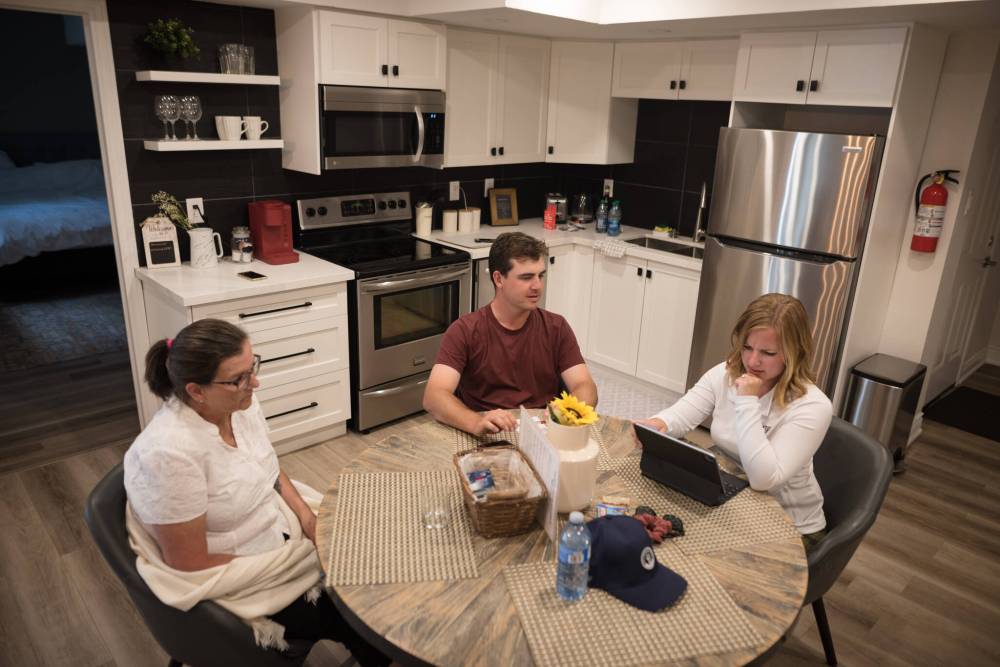
Cockerill had got to the final stage of Q-school in the fall of 2018, only to ultimately come up short; the top 25 get in. He made the most of his second opportunity, finishing fifth.
Unfortunately, that progress was largely stopped in its tracks by COVID, throwing his rookie season into disarray. However, it ended with a bang when he finished fourth in the Joburg Open in South Africa, pocketing more than US$42,000 for the biggest payday of his career.
“There was a lot of momentum and confidence from there,” he says.
To put that in perspective, that’s more than he made in the four previous seasons on the MacKenzie Tour in Canada. He made it to the final stage of the Korn Ferry qualifying school (the feeder tour of the PGA) in the spring of 2018, but didn’t get through, which had him exploring overseas options.
“I was, like, ‘This is stupid, what’s the point?’” I also didn’t play well in Canada so it was a frustrating season,” he says. “This was the next-best option, and I’m so happy I came.”
Now, there’s no looking back.
“I think it’s a good route. Playing 25 tournaments a year means you get to see 20-plus countries in the year. Obviously if you’re playing on the PGA Tour there’s a lot more money. But it’s also a lot of fun over here, the guys are awesome. Every time I go in the lunch room I sit with someone different and talk to them. Everyone is very friendly.”
After the round, Cockerill and one of his playing partners, England’s Dale Whitnell, who shot 76, are discussing what transpired as they enjoy a dish of spaghetti with prawns and a Coke at Ristoronte Portonovo.
But what’s really on the menu tonight is a healthy heaping of gossip, specifically the Saudi-backed upstart LIV Tour which has several big-named players, including Phil Mickelson, Dustin Johnson and Sergio Garcia defecting from the PGA Tour, lured by huge tournament purses and massive appearance fees. There’s also plenty of DP World Tour names, some of the most successful currently out here, in fact, which only means greater opportunity for the likes of Cockerill and Whitnell to compete and cash bigger cheques.
Cockerill notes that careers are short and says he believes players should do what they think is best for them. In his case, right now, that means playing right here.
After dinner, Cockerill says he’s headed to the washroom.
“I know the game he’s playing,” says Whitnell, one of his closest friends on tour. Sure enough, Cockerill returns a few minutes later with a sheepish smile, having just picked up the bill.
A morning draw for Round 1 always means an afternoon draw for Round 2. In Cockerill’s case, that brings warmer temperatures and what appears to be an even tougher golf course than 24 hours earlier.
Cockerill’s day begins a lot better than it ends. He’s only a couple of strokes from the top when he tees off, as many morning players have slid down the leaderboard after posting bloated numbers.
A bogey on No. 3 is followed by an incredible birdie at the fourth, courtesy of a monster 55-foot putt. As he looks over a birdie putt on the sixth hole, Cockerill now has a chance to pull into a multi-player tie for the lead. But he brushes the left edge and settles for par.
The course starts to bite back on No. 9, when his second shot on the par-five nearly goes in the pond in front of the large sloping green. Cockerill has to shed his shoes and socks to hit his third shot, standing in the water as he swings, but he advances the ball all of about five feet, then watches it roll back into the drink. Forced to take a one-stroke penalty, the adventure ends with double-bogey.
Bogeys on 11 and 15 are buffered by a birdie on 12, but his round ends with another double after dunking his second shot. He cards a five-over-par 77, leaving him at three-over for the tournament.
The cut line (top 65 and ties) ends up being four-over, one of the highest in tour history, which speaks to just how tough this course is playing.
Chad Deprez thought his best buddy was “crazy.”
After all, Cockerill was arguably one of the best teenage pitchers in the province, a promising baseball career beckoning. And he was going to throw it all away to test his mettle on the local golf circuit?
“Well, here we are. The rest of the story told itself,” Deprez says with a chuckle. “I didn’t know how good he was. I had no idea what kind of natural he was.”
They were joined at the hip from an early age, growing up on the same street in Stony Mountain and doing pretty much everything together. Now, despite being separated by thousands of kilometres most of the time, the bond remains strong.
On this particular week, for example, Deprez is on his honeymoon in Portugal and Cockerill is competing in Germany.
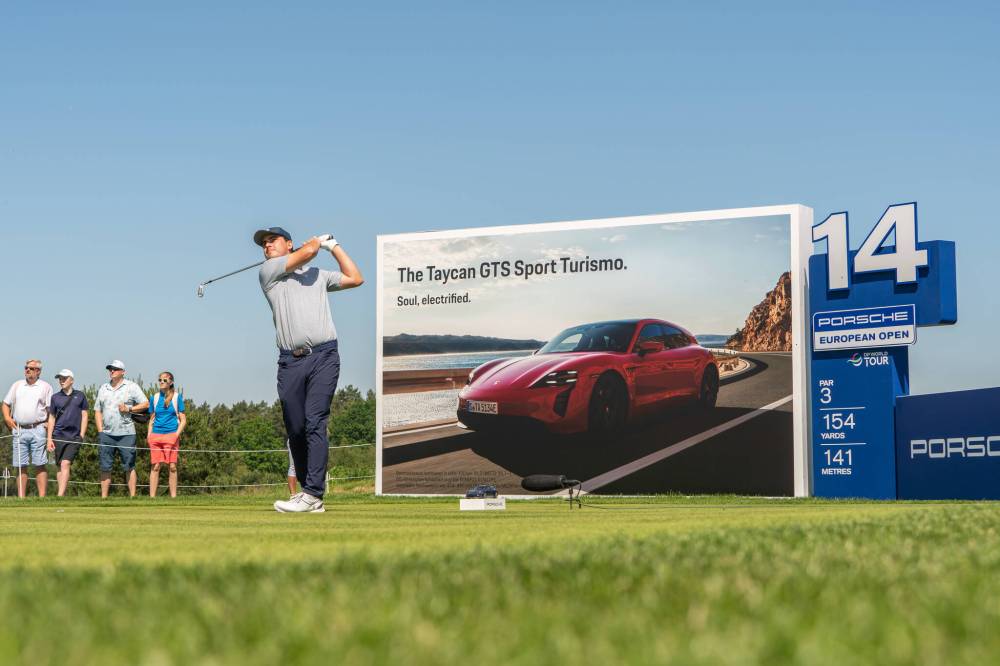
“I think we’re getting more stressed out than he does. We… wake up in the middle of the night to check his golf scores. The rest of your sleep depends on how he’s doing,” Deprez says.
“It’s a ton of fun for all of us to get to follow him. To have a professional golfer in your life is pretty special. On his weeks off you don’t know what to do Thursday through Sunday because you’re not refreshing your phone.”
That wasn’t an issue three Saturdays ago, when Cockerill was able to get home for his buddy’s wedding to Daria Lukie.
Cockerill says he wouldn’t have missed it for anything.
“He’s the most humble person in the world,” Deprez says. “The rest of us do all of his bragging for him because we’re all so proud of him and talk about all of his successes and describe to everybody who is willing to listen how well he’s doing, but he will never — he’ll never tell you himself.”
“He’s also incredibly giggly, it doesn’t matter whether your joke is good or bad, you’re gonna get a great response from him. So he’s a great friend to have because he boosts your confidence all the time. He’s always, like, there’s never a bad day in Aaron’s life. He’s always having a great time. Positive attitude. So he’s an easy guy to cheer for.”
“The rest of us do all of his bragging for him because we’re all so proud of him and talk about all of his successes and describe to everybody who is willing to listen how well he’s doing, but he will never– he’ll never tell you himself.” — Chad Deprez
Kyle Kelpin has been rooting for Cockerill since they first met in kindergarten.
“I remember Aaron got to take the attendance down to the office, and he picked me to go with him. From that day on, we got along. That’s how it all started,” he says.
“We played hockey together, and we always kind of lobbied to be on the same line. We had good chemistry. He was a goal-scorer and I was pretty good at digging it out of the corners and trying to set him up.”
Kelpin may have also given Cockerill a big assist when it comes to his eventual career, recalling how, around the age of 10, he and his father were members at Teulon and he started taking his friend out to the course.
“He enjoyed it. We were pretty even, but then he started getting more into it around 11 or 12. You could see he had really good touch. And after his first junior tournament — he went in there and won — we’re like, ‘OK, there’s something there,’” says Kelpin.
“It’s hard to make birdies. And easy to make bogeys.”
That’s the painful lesson Cockerill and the other competitors are learning. And as “moving day” gets underway — that’s what Saturday is traditionally referred to in any four-round golf tournament — it’s more about trying not to spiral out of control.
Fortunately, Cockerill has his “A” game pretty much from the start. He hits the first nine greens in regulation, but is rewarded with only a single birdie on the second hole,along with eight pars.
Meanwhile, his playing partner, Kristoffer Broberg of Sweden, is having a much tougher time. After he makes a bogey on nine, Broberg loudly drops an F-bomb, tosses his ball in the air and whacks it into the pond with his putter.
Cockerill, however, remains cool and composed.
“I try to act the same way whether I’m shooting 65 or 80,” he says.
Three Hamburg residents are among the few dozen following him; it’s barely 11 a.m. and the trio are, to put it mildly, completely blotto.
Cockerill makes his first bogey of the day on 13, thanks to a tough three-putt, then drops two more strokes on 14 when his tee shot catches the water.
But he drains a 20-footer on 16 for birdie, then finishes his day with two pars for a one-over-par 73 that has him surging up the leaderboard as so many others are dropping strokes left and right.
“The biggest thing is just patience. Normally I can make five, six birdies in a round. Out here it’s, like, two,” Cockerill says as we head back to the hotel on the mid-afternoon bus shuttle.
Broberg’s temper is a subject of discussion, and Cockerill says he’s seen plenty of other blowups in his short time on tour.
Perhaps the biggest came from a Chinese player, Haotong Li, who exploded at his caddy for giving him the wrong yardage, then tore his own sweater in half like he was Hulk Hogan to further show his displeasure.
“We were trying not to laugh,” says Cockerill. “The next hole, he got a birdie and was in a bit better mood, so I said to him ‘Haotong, are you a fan of wrestling? We’re going to start calling you Haotong Hulk!”
There is some sugar-coating to explain where the tournament got away Sunday.
It all came with a disastrous quadruple-bogey on the sixth hole. Cockerill pulled his drive into a marsh and had to take a penalty stroke. His next shot barely stayed out of the water, but was unplayable and he had to take a one-shot penalty.
It was ugly. Bowling-shoe ugly.
Bogeys on 10 and 11 and a double on 13 — another water ball — had Cockerill plummeting down the leaderboard. His driver was the biggest problem, sending tee balls left and right but rarely straight.
Add it all up and he shot an eight-over 80, the second-worst round of the day among the 73 players who made the cut. It translated into in a tie for 70th and a payday of just over US$3,000 on the week.
Meanwhile, Finland’s Kalle Samooja shot an incredible eight-under 64 — the best round in the tournament — for his first-ever championship. Samooja and Cockerill began the final round just two strokes apart. They finished separated by 18.
So close. And then, so far.
As Cockerill sits in L’Osteria, a downtown Hamburg pizza joint, on Sunday evening, he’s relieved the tournament was over.
Although he loved getting to explore the German city, he wasn’t as happy about having seen pretty much every inch of the golf course. Way too much of it.
He’s got a long plane ride ahead for this one to linger, with an early morning two-hour flight to London, followed by a seven-hour trek across the Atlantic to Toronto.
As he got up to leave, he made sure to grab the few pieces of pizza that remained behind, bagging them so he could give them away to any hungry folks he might encounter on the street during his 15-minute walk back to the hotel.
They met at a junior high school badminton tournament. He was playing boys doubles, Chelsea Scrivener was playing mixed doubles.
“My partner was friends with Aaron, so we had, like, a break and all ate lunch together. That’s where we met,” she recalls.
The friendship blossomed in high school and they began dating, mostly long-distance, when Cockerill went off to college in Idaho and she stayed home to pursue a career in finance. They figured out how to make the relationship work, and got married last September.
She’s never been much of a golfer, but she joined Cockerill on tour last year when COVID-19 made travelling home nearly impossible for him.
“She’s been amazing. And you need that. Sometimes over here it’s lonely, you’re not playing as good as you like, it can be lonely and frustrating. That’s why it was so nice having her,” says Cockerill. “The travel is part of the deal. It’s the best, and the worst, part.”
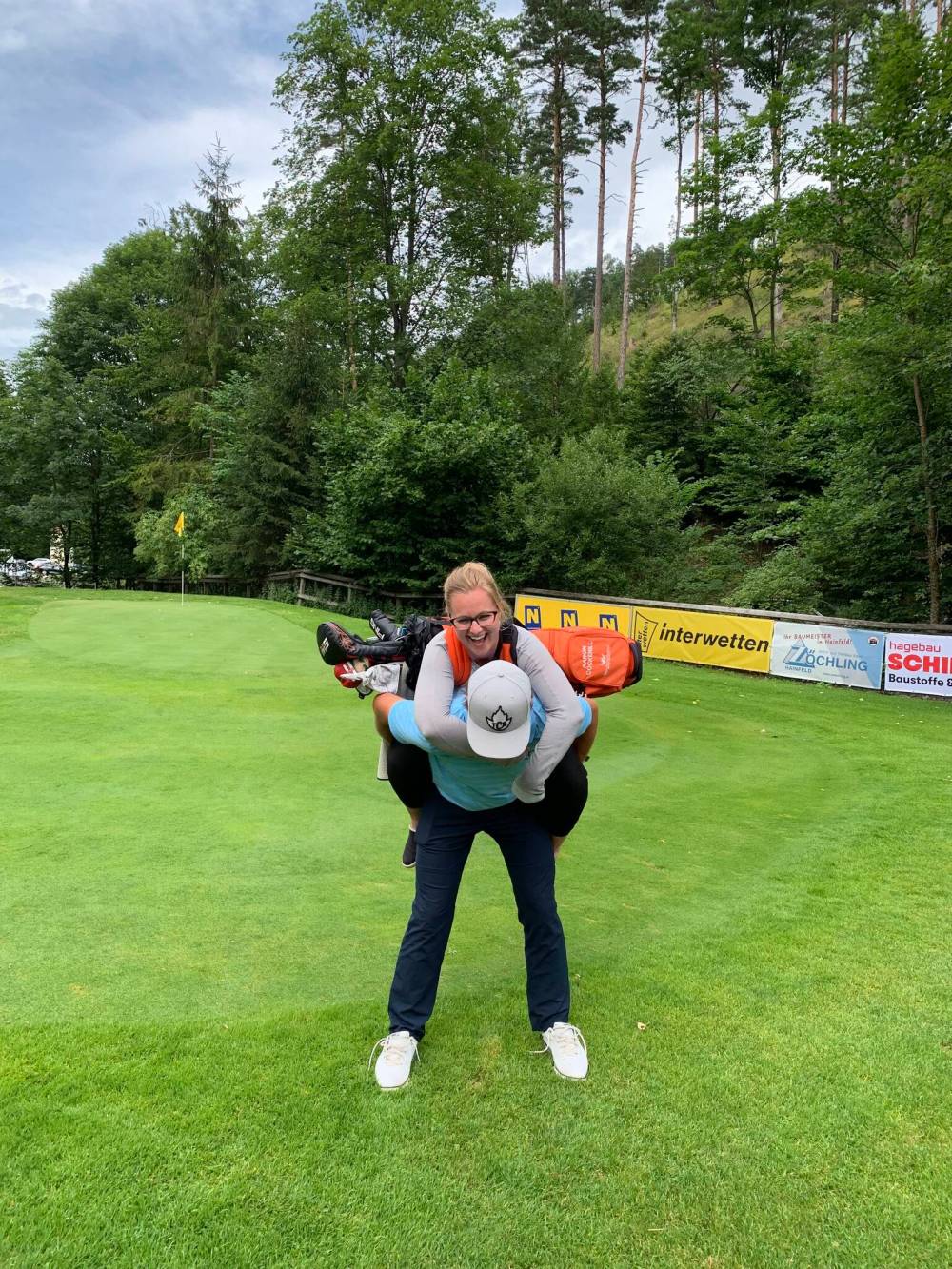
Chelsea caddied for him in a few events, gaining a quick appreciation for the rigours of pro golf.
“For me, it just gave me such a respect of what Aaron’s doing and what all the guys are doing. Obviously I have skin in the game, but you watch the pressure these guys put on themselves, how lonely it is, constantly missing things, it just it put it all into perspective,” she says.
“It was just really eye-opening to see that, you know, it’s not just a walk in the park and these guys are literally fighting for a paycheque. They’re fighting for their (tour playing) cards. It’s stressful. It just made me appreciate it a lot more.”
Chelsea, who is now working as a real estate agent for Re/Max, says it’s never easy being apart for weeks at a time. But the sacrifice is starting to pay off.
“We take the time every day to make sure we have a long phone call. I think it speaks a lot to our relationship. We thrive together, and we thrive apart,” she says.
“The career is short, so you have to kind of take advantage, and if he can get that full card next year, that changes things. He gets the best schedule, gets to have more non-negotiables where he comes home more. So we’re working towards that goal as a team.”
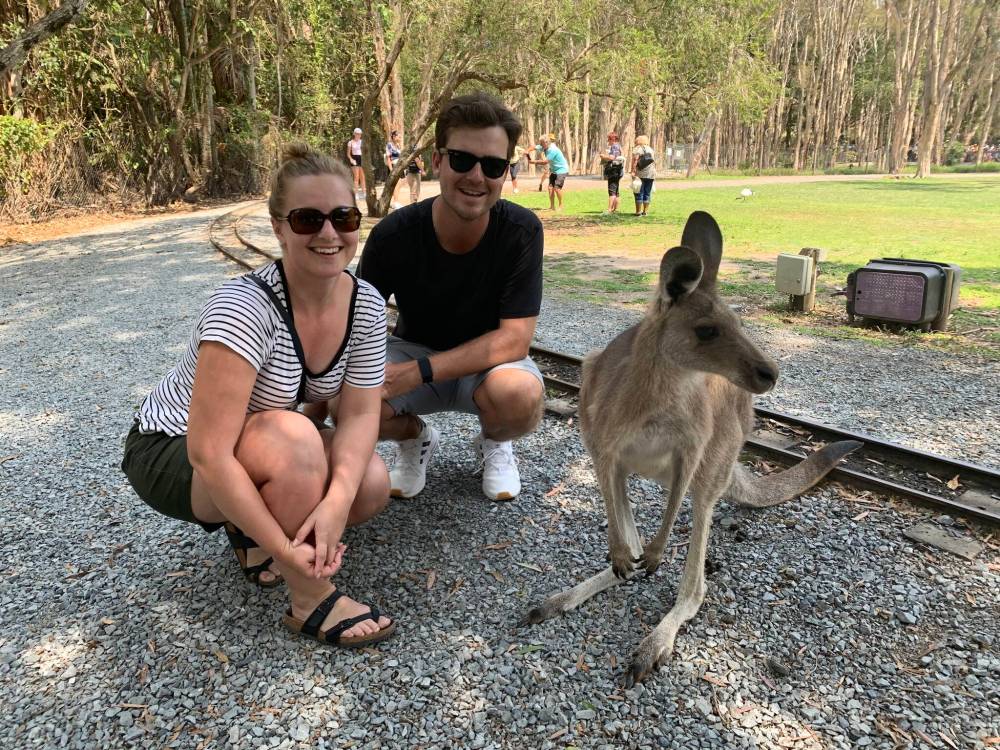
There was a point at the beginning of this year when Chelsea wondered if her husband was ready to throw in the towel. With just his part-time status and a couple of missed cuts, the situation was starting to look bleak.
“I, personally, have never put a timeline on him because I just think it’s something you need to ride out. And when he decides he’s not having fun anymore, then that’s when you stop. But if you’re still enjoying it then, like, why stop? We’ll just figure the rest of life out,” she says.
“But I could tell he was kind of getting to the point where he was, like, ‘If I lose my card this year, I’m done, I’m not going back to Q school, maybe I’ll just move on.’ Now he just has so much less stress. When he was home (last month) for the wedding, I could just tell that the stress in the back of his mind was gone. And I think he’s going to have an awesome year because of it. I’m just so thankful it happened because, you know, I think it would have been really hard for me to continue to convince him to keep giving it a go.”
As the clock hits 1:50 p.m. Thursday, 135 of the 156 players in the Canadian Open are already on the golf course.
Under a mostly cloudy Toronto sky, with a slight breeze at his back, Cockerill gently places the ball on his tee, then takes a glance to his right as the three most important people in his life — mom, dad and wife — watch nervously from behind the ropes.

One final look at the task ahead, one final, deep exhale and he executes a smooth swing with his driver.
“That’s it AC!” Doug Bottrell shouts to his son.
The kid from Stony Mountain has officially arrived. He is — for this, week anyway — competing at the peak of his profession. He is a PGA Tour player.
Just by getting to this stage, Cockerill already has a victory, of sorts, under his belt. But he’s hungry for more.
The courses and competition will change weekly. But the focus remains the same. Whether it’s at his current home away from home in Europe, or back here on more familiar soil, the quest for perfection continues.
mike.mcintyre@freepress.mb.ca
Twitter: @mikemcintyrewpg
On the greens
After a few years on the Canadian Tour and recent success in Europe, Stony Mountain’s Aaron Cockerill teed it up Thursday in Toronto with some of pro golf’s best in Canada’s national championship
The Free Press spent the past two weeks with him and his family, learning about one of the sport’s nice guys and his compelling story Aaron Cockerill is competing in this week’s Canadian Open against some of the best golfers in the world; it’s a dream come true for the unassuming 30-year-old from Stony Mountain, who has been working on his game in Europe with the goal of getting to the PGA Tour full time

Mike McIntyre grew up wanting to be a professional wrestler. But when that dream fizzled, he put all his brawn into becoming a professional writer.
Our newsroom depends on a growing audience of readers to power our journalism. If you are not a paid reader, please consider becoming a subscriber.
Our newsroom depends on its audience of readers to power our journalism. Thank you for your support.
History
Updated on Friday, June 10, 2022 1:36 PM CDT: Updates headline.



